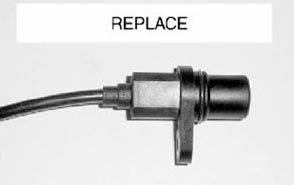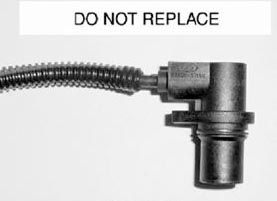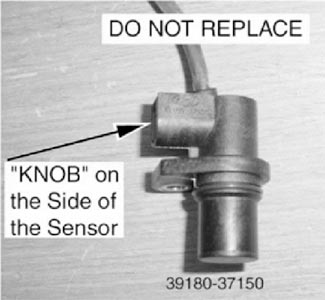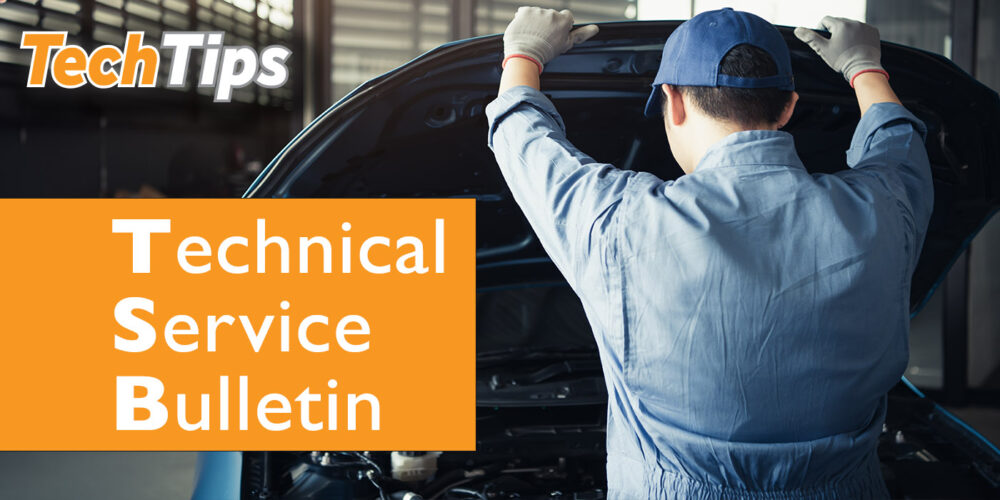Question: I’ve noticed different crankshaft sensors on 2.7L Hyundai engines. Is there a revised sensor, and if so, which one should I use?
Answer: The AERA Technical Committee offers the following information regarding a revised crankshaft sensor for 2001-’02 Hyundai 2.7L engines. Since this engine was first designed, three crankshaft sensors have been used. The original design sensor should no longer be used. To help determine which sensor is appropriate for use, Hyundai has supplied visual aids for positive identification. Refer to the photos at left and part numbers below to select the proper crankshaft sensor. The current sensor has two different designs.
Part Number 39180-37200 (Photo 1): Inspect the CKP sensor. If the wiring of the CKP sensor comes out straight from the top of the sensor, replace the sensor.

Part Number 39180-37150 (Photo 2): If the wiring of the CKP sensor comes out at a 90° angle from the top of the sensor, do not replace the sensor.

Part Number 39180-37150 (Photo 3): If the wiring of the CKP sensor comes out straight from the top of the sensor and has a 90° plastic knob at the top of the sensor, then do not replace the sensor unless it is damaged.

Courtesy of AERA, Engine Rebuilders Association.













